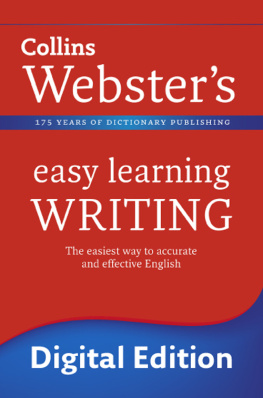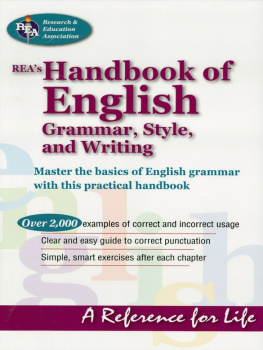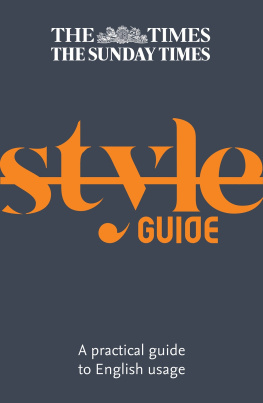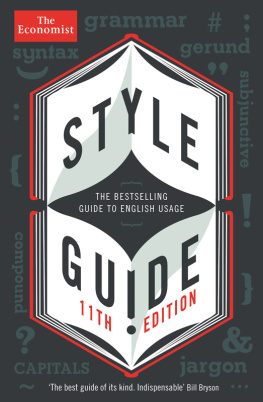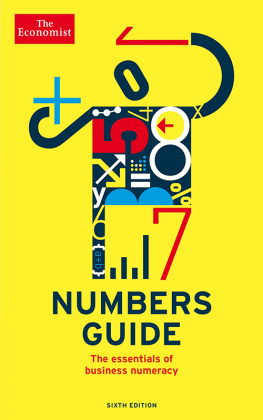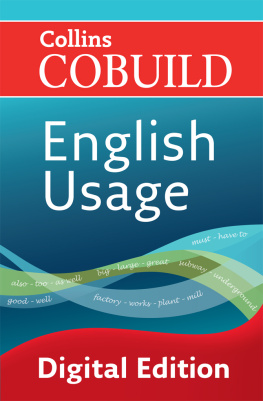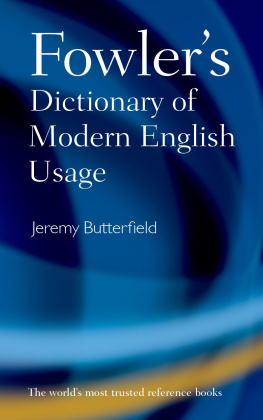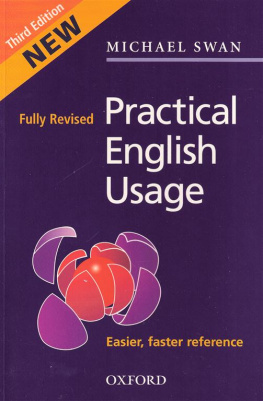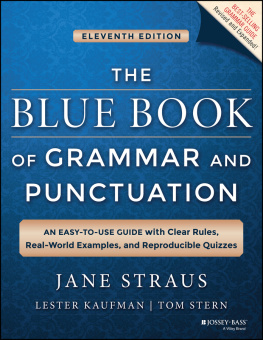Style Guide

Style Guide
Twelfth edition
Published under exclusive licence from
The Economist by Profile Books Ltd 3 Holford Yard Bevin Way London WC1X 9HD
www.profilebooks.com Copyright The Economist Newspaper Ltd, 1986, 1991, 1993, 1996, 1998, 2000, 2001, 2003, 2005, 2010, 2013, 2015, 2018 All rights reserved. Without limiting the rights under copyright reserved above, no part of this publication may be reproduced, stored in or introduced into a retrieval system, or transmitted, in any form or by any means (electronic, mechanical, photocopying, recording or otherwise), without the prior written permission of both the copyright owner and the publisher of this book. The greatest care has been taken in compiling this book. However, no responsibility can be accepted by the publishers or compilers for the accuracy of the information presented. A CIP catalogue record for this book is available from the British Library eISBN 978 1 78283 348 2
Contents
Preface
Every newspaper has its own style book, a set of rules telling journalists whether to write e-mail or email, Gadaffi or Qaddafi, judgement or judgment.
The Economists internal style book (now an online guide, rather than a book) does this and a bit more.
It also warns writers of some common mistakes and encourages them to write with clarity and simplicity. All the prescriptive judgments in the style guide are directly derived from those used each week in writing and editing The Economist. And some of the judgments, advice and definitions given here differ from those given by other authorities. This twelfth edition of the The Economist Style Guide is in three parts. The first is based on the traditional style book used by those who edit The Economist; it is largely the work of John Grimond, who over the years was editor of the Britain, United States and Foreign sections, before retiring in 2013. Johnny is a hard act to follow, and he left at a time when proper English usage seemed in full retreat in the face of texting, tweeting and internet jargon generally.
His work still stands as a bulwark against it, as well as a monument to his impish wit and his sense of euphony, rightness and correctness. If slight cracks have now appeared in the bulwark, it is because language is a living thing that continually changes; some changes are benign, and some (such as the pervasive smartness of the digital age) simply cannot be resisted. The second part of the book, on American and British English, describes some of the main differences between the two great English-speaking areas in spelling, grammar and usage. To make the style guide of greater general interest, Part 3 consists of handy reference material that might appeal to readers of The Economist. Throughout the text, italic type is used for examples except where they are presented in lists, when the type is roman, as this text is. Words in bold indicate a separate but relevant entry, that is, a cross-reference.
Many people have been involved in this book as it has developed and changed over the years. Thanks are due to all of them, with special thanks to Penny Butler, Ingrid Esling, Graham Douglas, Penny Garrett, Lane Greene and Anton LaGuardia, whose help has been invaluable and continues to be so. Ann Wroe, Obituaries Editor, The Economist January 2018
Introduction
On only two scores can
The Economist hope to outdo its rivals consistently. One is the quality of its analysis; the other is the quality of its writing. The aim of this book is to give some general advice on writing, to point out some common errors and to set some arbitrary rules. The first requirement of
The Economist is that it should be readily understandable.
Clarity of writing usually follows clarity of thought. So think what you want to say, then say it as simply as possible. Keep in mind George Orwells six elementary rules: 1 Never use a metaphor, simile or other figure of speech which you are used to seeing in print (seemetaphors). 2 Never use a long word where a short one will do (seeshort words). 3 If it is possible to cut out a word, always cut it out (seeunnecessary words). 5 Never use a foreign phrase, a scientific word or a jargon word if you can think of an everyday English equivalent. 6 Break any of these rules sooner than say anything outright barbarous. 6 Break any of these rules sooner than say anything outright barbarous.
Readers are primarily interested in what you have to say. By the way in which you say it, you may encourage them either to read on or to give up. If you want them to read on: Catch the attention of the reader and then get straight into the article. Do not spend several sentences clearing your throat, setting the scene or sketching in the background. Introduce the facts as you tell the story and hold the reader by the way you unfold the tale and by a fresh but unpretentious use of language. In starting your article, let your model be the essays of Francis Bacon.
He starts Of Riches with I cannot call riches better than the baggage of virtue. Of Cunning opens with We take cunning for a sinister or crooked wisdom. Of Suspicion is instantly on the wing with Suspicions amongst thoughts are like bats amongst birds, they ever fly by twilight. Each of these beginnings carries implicitly within it an entire essay. Each seizes the reader by the lapels and at once draws him into the subject. No gimmickry is needed, no flowery language, no literary contrivance.
Plain words on their own carry enough meaning to provoke an intriguing thought, stir the readers curiosity and thus make him want to continue. You must strive for a similar effect. Articles in The Economist should be like essays, in that they have a beginning, a middle and an end. They should not be mere bits of information stitched together. Each should be a coherent whole, a series of paragraphs that follow logically in order and, ideally, will suffer if even one sentence is cut out. If the article is a report, the facts must be selected and presented as a story.
If it is a leader or more analytical article, it should also have a sense of sequence, so that the reader feels he is progressing from a beginning to a conclusion. Either way, it is up to you to provide the ideas, analysis and argument that bind the elements of the article together. That is the hard part. Once you have them, though, you need only plain, straightforward words to express them. Do not imagine that you can disguise the absence of thought with long words, stale metaphors or the empty jargon of academics. Read through your writing several times. Edit it ruthlessly, whether by cutting or polishing or sharpening, on each occasion. Read through your writing several times. Edit it ruthlessly, whether by cutting or polishing or sharpening, on each occasion.
Avoid repetition. Cut out anything superfluous. And resist any temptation to achieve a literary effect by making elliptical remarks or allusions to unexplained people or events. Rather, hold your readers attention by keeping the story moving. If the tale begins to flag, or the arguments seem less than convincing, you can rescue it only by the sharpness of your mind. Nothing is to be gained by resorting to orotundities and grandiloquence, still less by calling on clichs and vogue expressions.
Unadorned, unfancy prose is usually all you need. Do not be stuffy. To write a genuine, familiar or truly English style, said Hazlitt, is to write as anyone would speak in common conversation who had a thorough command or choice of words or who could discourse with ease, force and perspicuity setting aside all pedantic and oratorical flourishes. Use the language of everyday speech, not that of spokesmen, lawyers or bureaucrats (so prefer


